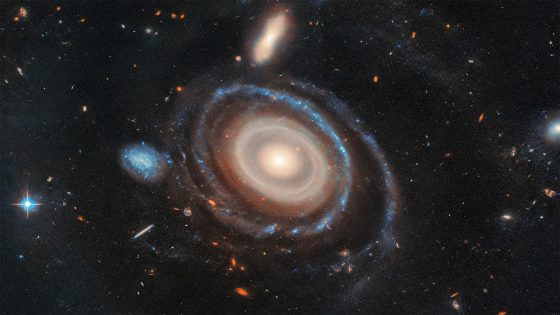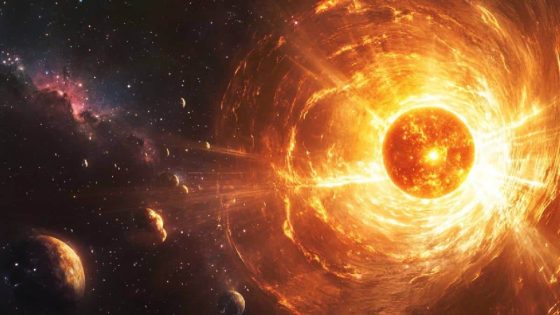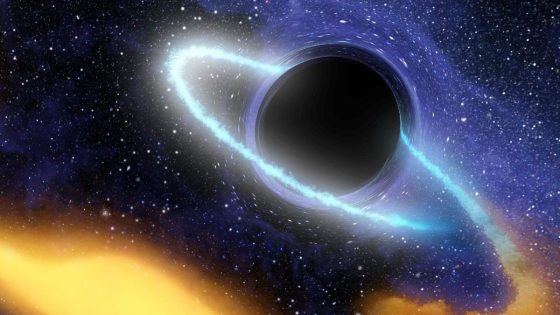On February 5, 2025, astronomers made an exciting discovery about the Bullseye galaxy, revealing stunning rings formed by a cosmic collision. How do galaxies interact, and what can this tell US about our universe? The Bullseye galaxy, also known as LEDA 1313424, showcases a unique structure that challenges previous understandings of galactic impacts.
- Galaxies collide and reshape over time.
- Bullseye galaxy shows nine distinct rings.
- Hubble Telescope captured rare cosmic event.
- Dwarf galaxy created expanding star formation rings.
- Discovery confirms theories of ring formation.
- Future telescopes will enhance galactic studies.
Discovering the Bullseye Galaxy’s Unique Rings and Their Formation
What happens when galaxies collide? The Bullseye galaxy provides a rare glimpse into this cosmic phenomenon. Astronomers have observed nine rings created by a smaller blue dwarf galaxy that passed through the Bullseye’s core, leaving behind a mesmerizing pattern of star formation.
Understanding the Formation of Rings in the Bullseye Galaxy
The formation of rings in the Bullseye galaxy is a remarkable event. The smaller galaxy’s high-speed passage caused ripples of gas and dust, leading to new star formation. Here are some key points to consider:
- The Bullseye galaxy spans 250,000 light-years, making it more than twice the size of the Milky Way.
- Hubble Space Telescope confirmed the existence of nine distinct rings, more than any other known ring galaxy.
- The rings represent waves of star formation triggered by the collision.
- This event occurred about 50 million years ago, providing a snapshot of galactic evolution.
The Cosmic Ripple Effect: How the Collision Shaped the Galaxy
Imagine dropping a pebble into a pond. The ripples spread outward, creating a pattern. In the Bullseye galaxy, the smaller galaxy’s passage created similar ripples, leading to the formation of rings. Each ring marks a wave of compressed gas, resulting in the birth of new stars. This cosmic ripple effect highlights the dynamic nature of galaxies and their interactions.
Implications for Future Research on Galactic Interactions
The discovery of the Bullseye galaxy’s rings opens new avenues for research. Understanding how galaxies interact can provide insights into the long-term fate of our own Milky Way. As advanced telescopes like NASA’s upcoming Roman Space Telescope come online, astronomers expect to uncover even more about these spectacular cosmic events.
In conclusion, the Bullseye galaxy’s stunning rings offer a unique opportunity to study galactic interactions and star formation. This discovery not only enhances our understanding of the universe but also raises new questions for future exploration.
































